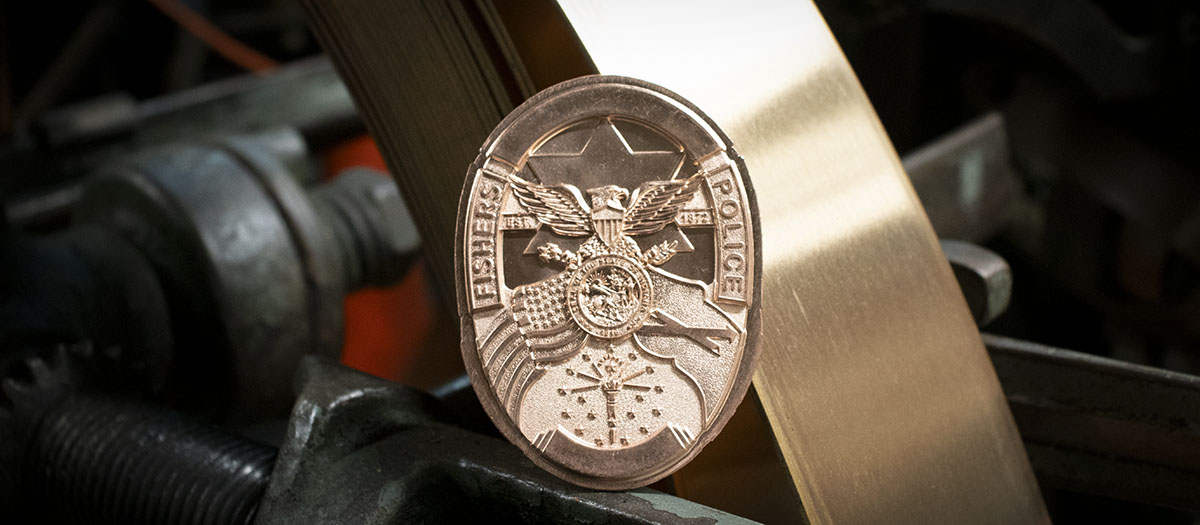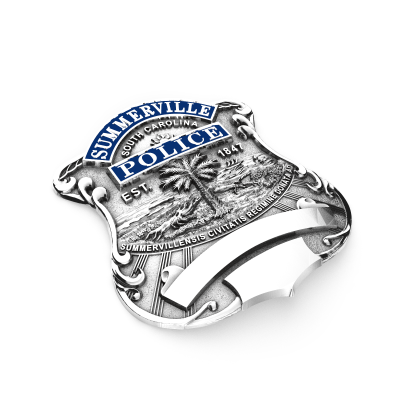What are the different types of brass alloys used to make badges?
Learn more about the significance of brass alloys in badge manufacturing.

You probably know that your badge is made of brass, but do you know which type of brass was used to make your badge? Manufacturers have many choices of brass and each variety has a combination of copper and typically zinc, with a couple of varieties containing tin or nickel. Different metal compositions change the color, cost, and design flexibility of a badge.
In this article, we will explore the benefits of using brass in badge manufacturing. We will look at the most common types of brass alloys for badges and learn reasons why one type of brass might be used over others. Interestingly, the choice of brass alloy becomes very important in non-plated badges because the brass alloy is what determines the badge’s color.
The Benefits of Brass Alloys for Badge Manufacturing
There are three main benefits of using brass alloys for badge manufacturing and they are color, malleability, and good surface composition for polishing and electroplating. As for color, some alloys are red, some are brown, while others have a silver or gold tone. Even bronze is a brass alloy!
Malleability for badges means the level of detail in a design that can be pressed into the metal without it cracking or breaking. Brass can be softened enough to be stamped, but when stamped, it hardens so that the shape and details can be maintained through the production process and out in the field. The degree of malleability differs with alloy composition. To make badges with a lot of fine detail you need to use a metal that is soft and malleable.
It is important to note that while brass might be a great surface for polishing to add shine, the metal needs to be protected otherwise it will corrode. Electroplating or a clear coat is commonly used to provide this protection. Either way, brass can be polished for lots of shine or can be stippled for a textured or matte finish.
Brass Alloys: Composition and Color
As you will see in this chart, each brass alloy has percentages of copper and primarily zinc, but the addition of nickel and tin produces different colors in a couple of these alloys. Manufacturers do have preferences and there are some different reasons you would choose one over another.
- Cartridge Brass (Alloy 260) is 70% copper and 30% zinc. This hard, yellow alloy is characterized by a gold tone. It is a cost-effective choice for badges offering a bright appearance without adding extra costs.
- Rich-Low Brass (CDA #230) is 85% copper and 15% zinc. Rich-Low Brass is popular because detailed designs work well. Its natural yellow color resembles gold, making it a favored choice for badges.
- Commercial Bronze (UNS C22000) is 90% copper and 10% zinc. Bronze is a popular badge color. Bronze is also known for its durability and somewhat timeless look, so good for design and vintage appeal.
- German Silver (Alloy 625), also known as Nickel Silver, is 87% copper and 13% nickel. As the name suggests, this alloy is a natural silver color. If you want a non-plated silver badge, this is a great option.
- Tin Brass (Alloy 425) is 85% copper, 13% zinc, and 2% tin. The addition of tin lightens the color, creating a lighter golden color. Tin Brass is popular for its golden appearance, offering a cost-effective gold alternative.
- Guilding Metal (Alloy 210) is 95% copper and 5% zinc. Guilding Metal is the most malleable option and is a great option for 3D designs. It has a natural red color. It polishes to a high shine and works well for electroplating, allowing for customization.
At Smith & Warren, our alloy of choice is Guilding Metal (Alloy 210). Guilding metal works well for elaborate 3D designs. It also polishes well. This is important because the treatment of the brass before plating is what makes a badge shiny or matte. Electroplating adds color and protection, but polishing the brass adds shine! Our manufacturing recommendation for badges is an electroplated badge and Guilding Metal brass is a very good surface for electroplating. We offer many finish color selections and special two-tone finishes and you can read about about those finishes in this article.
We are always eager to learn what you are looking for in a badge. Our sales team is available to listen, ask questions, and provide guidance on brass alloys and finish options. We want to help you design the best badge for you and your department.



